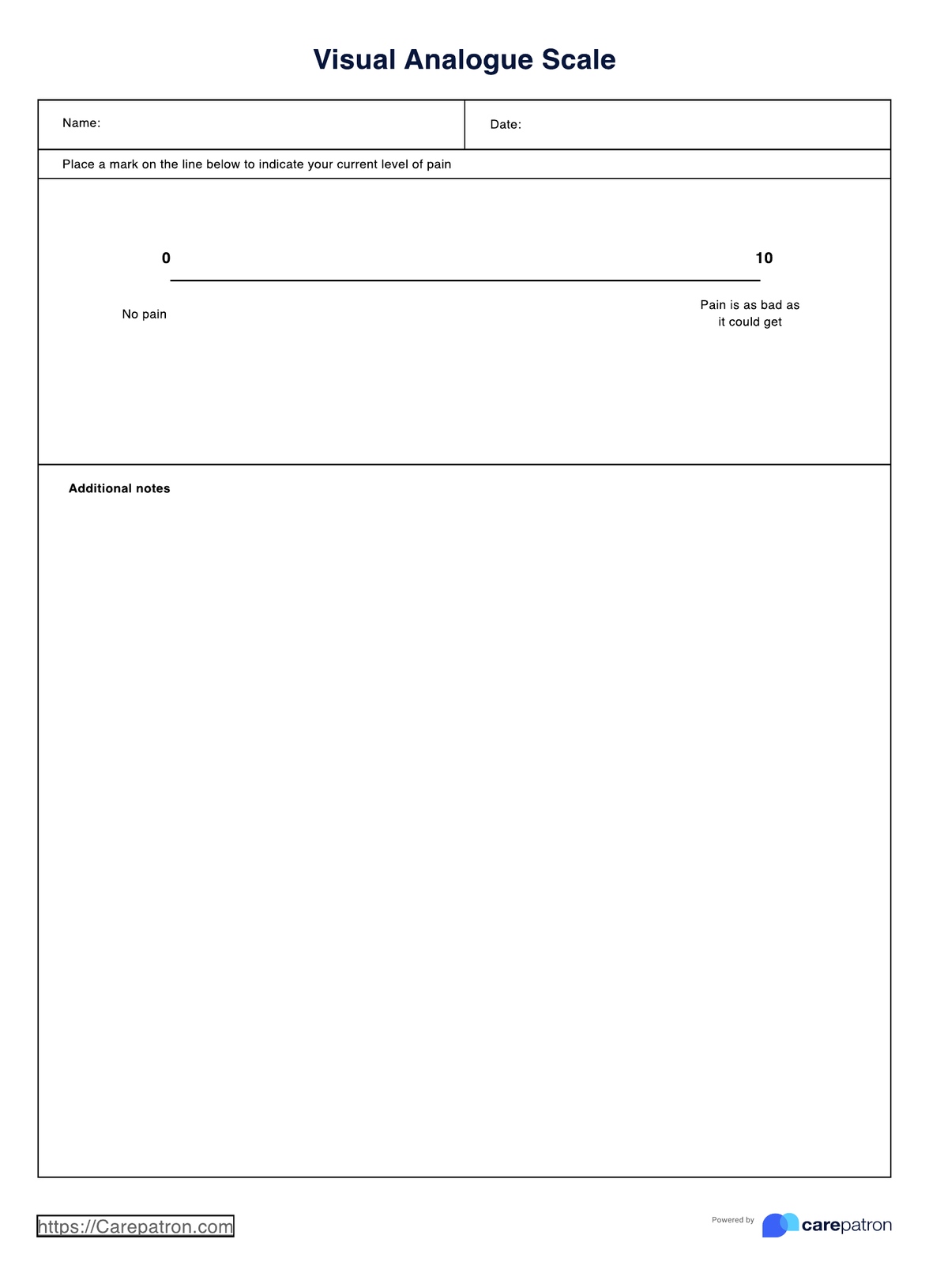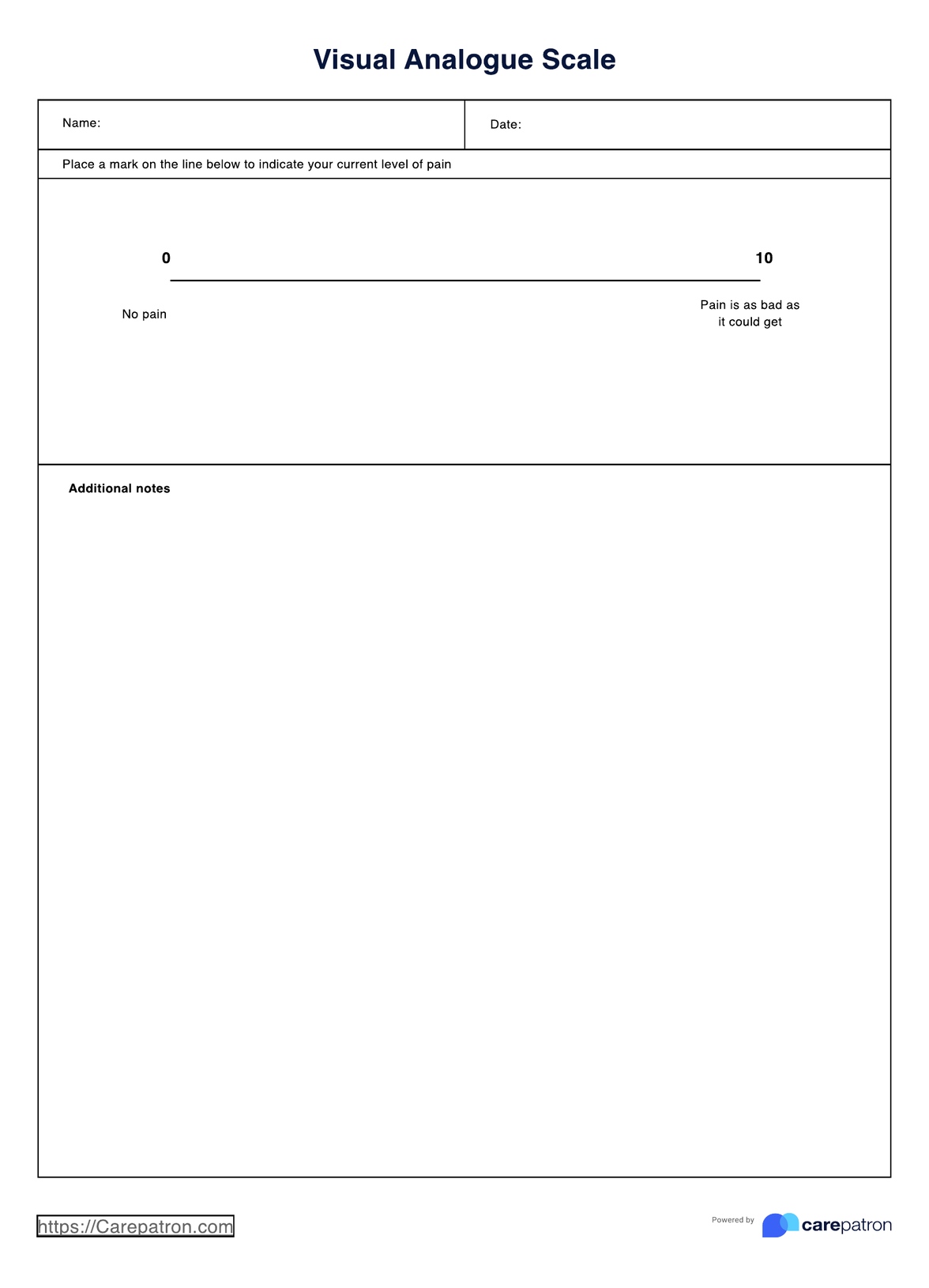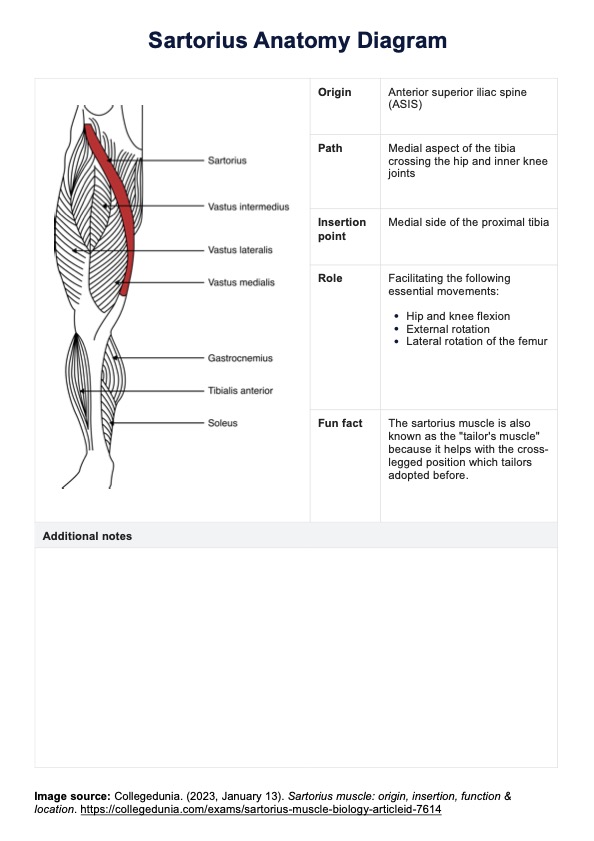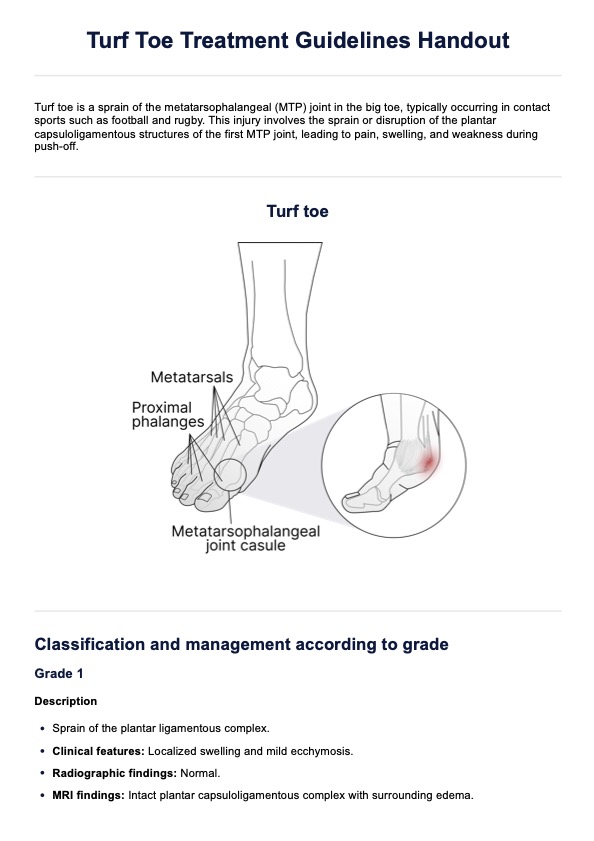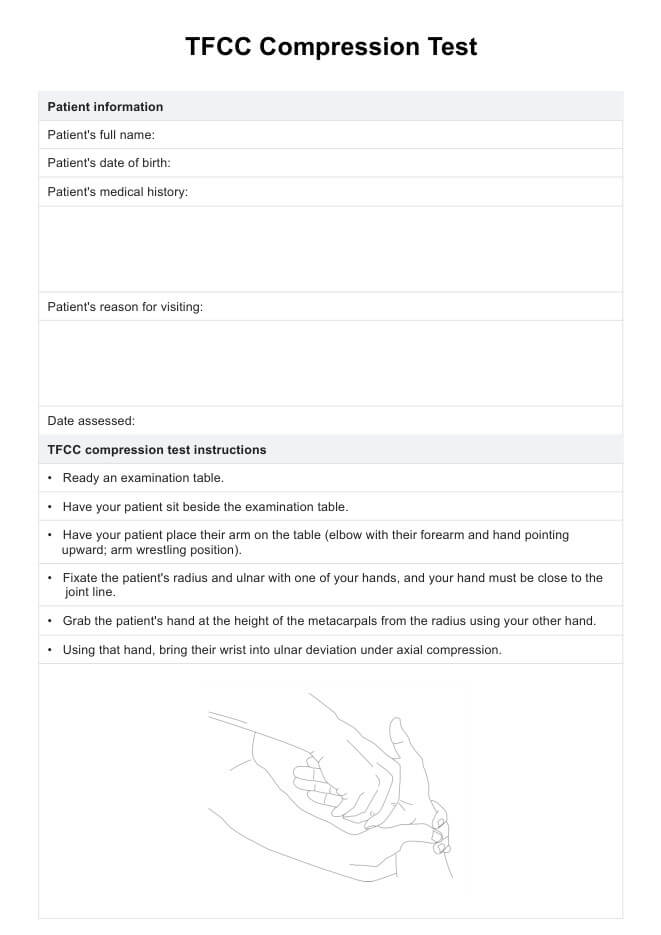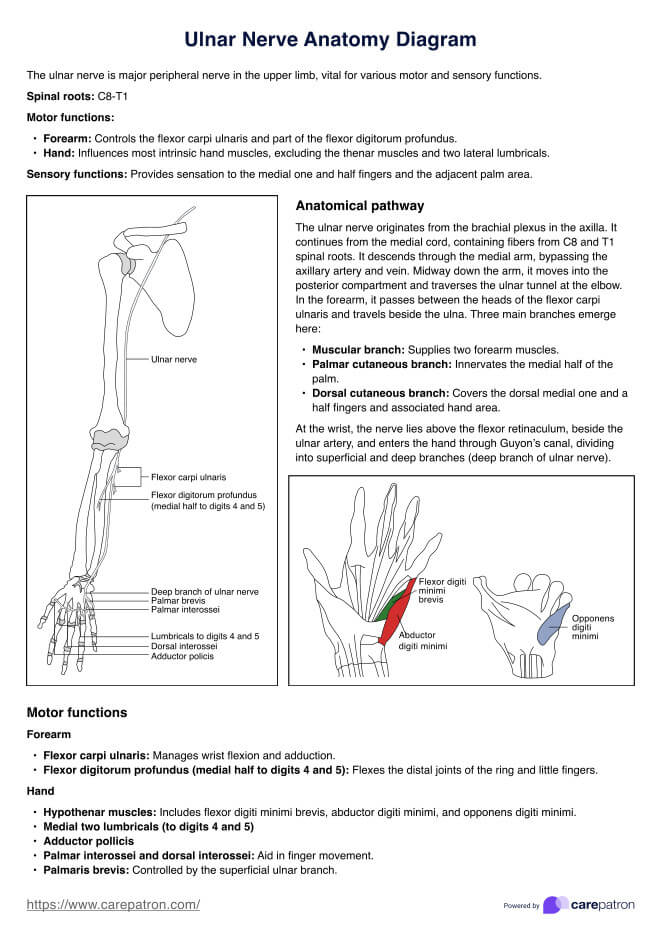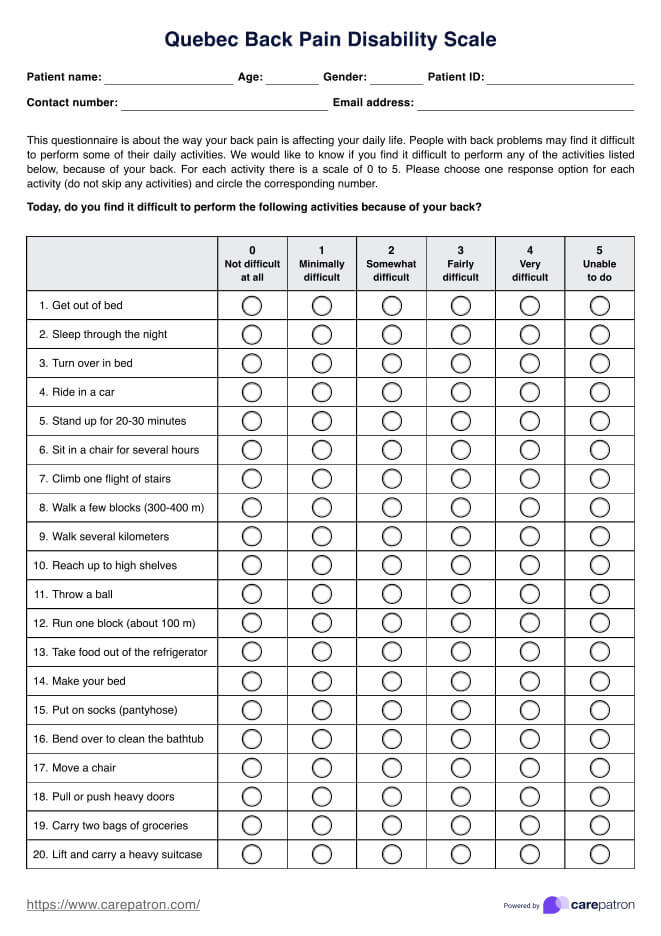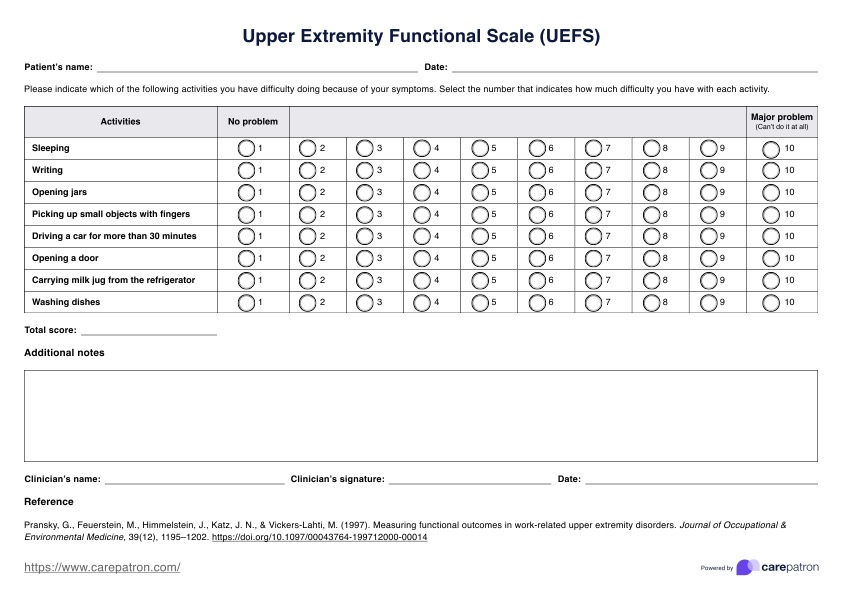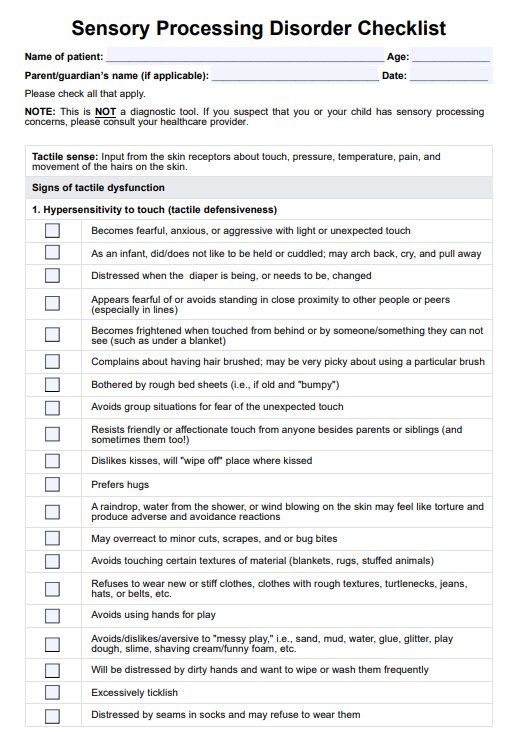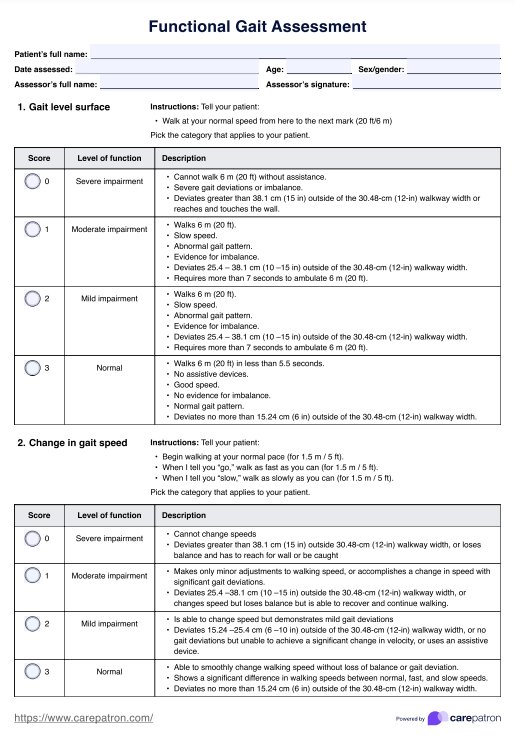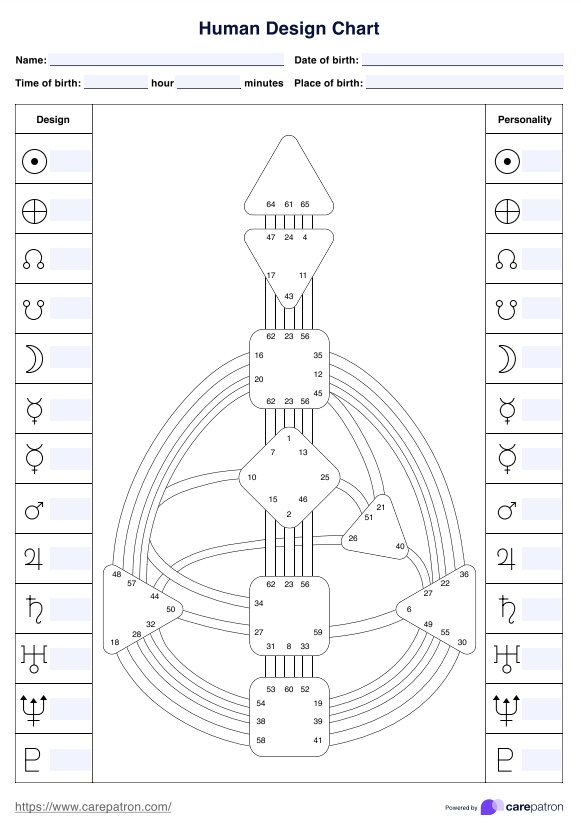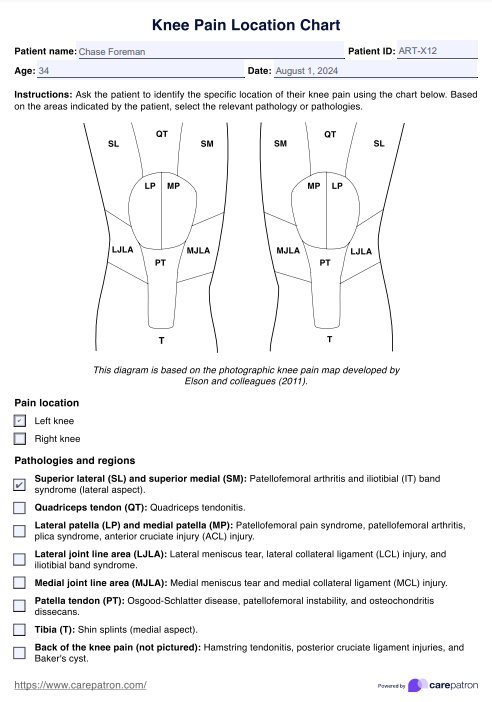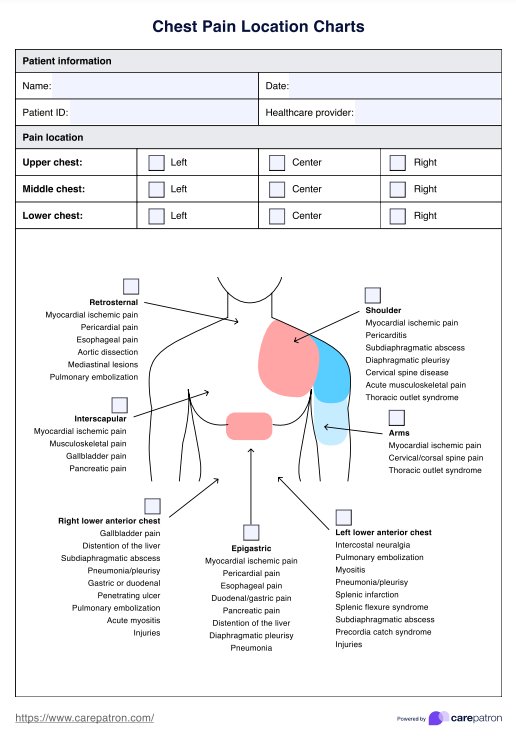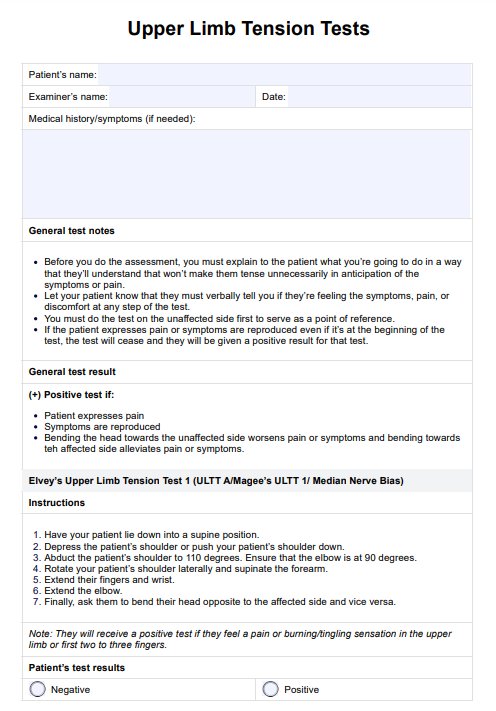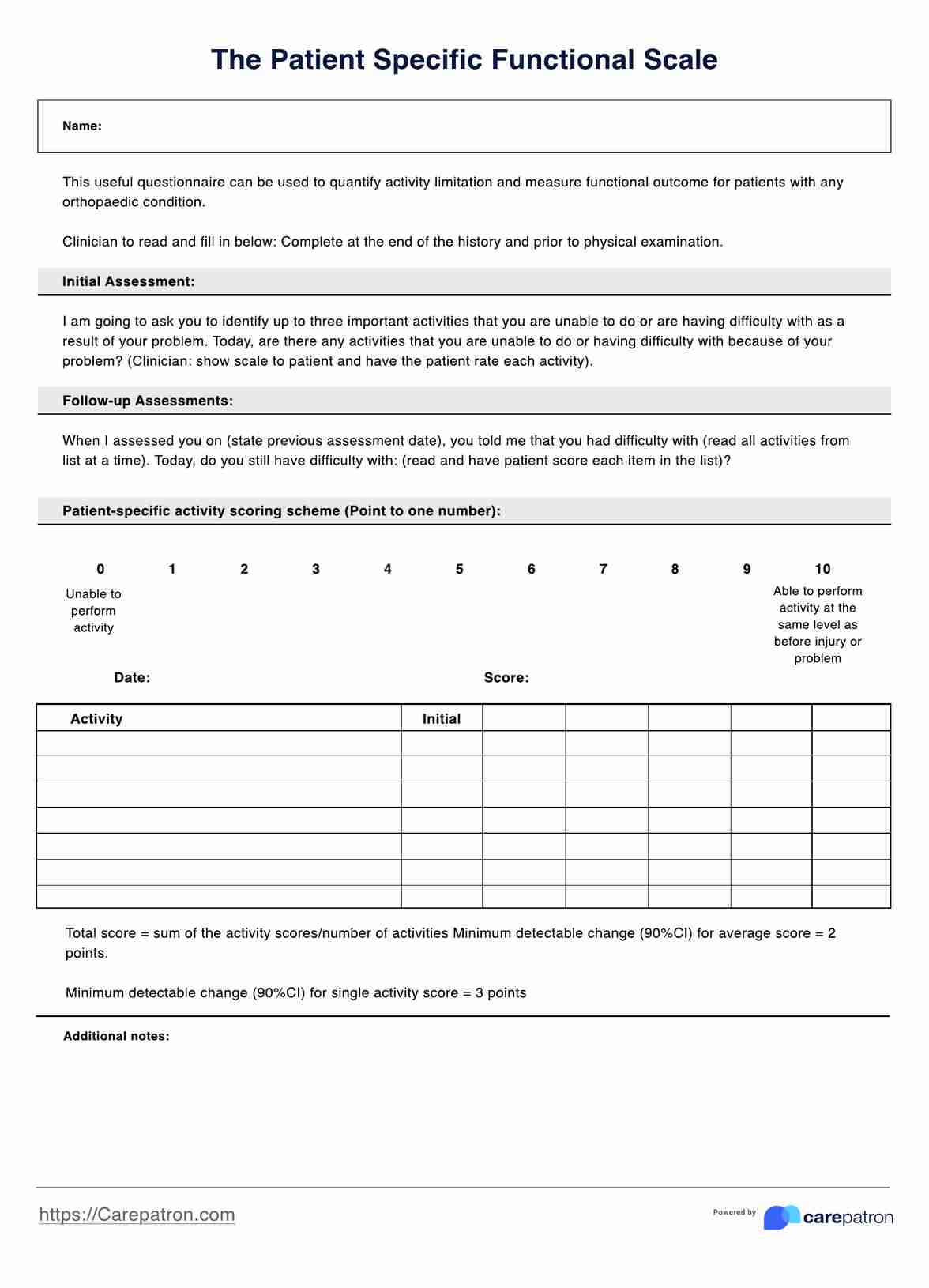Visual Analogue Scale
Download our free Visual Analogue Scale and free sample PDF to help you measure your patient's perceived pain, fatigue, or other physical feelings.


What Is A Visual Analogue Scale (VAS)?
Pain is a subjective experience. It can't be seen externally and is challenging to measure objectively. To help gauge an individual’s experience of pain, healthcare professionals use a (VAS).
A VAS is a psychometric testing tool that uses a sliding scale from 0-10 to measure the intensity of someone’s physical sensations, such as pain or fatigue. It is generally used in medical contexts and can help track symptom changes over time.
It consists of a 10cm line (or other measured unit) with anchors at the two extremes (e.g., ‘no pain’ and ‘worst possible pain’). Healthcare professionals then ask patients to mark a point that corresponds to their current physical sensations on the line. The distance between the marked point and one of the anchors is then measured, providing an objective measure of symptom intensity.
The scale is great as it is sensitive to small changes as opposed to ordinal scales which are categorised. This means that health care professionals can gauge a greater and more comprehensive picture when it comes to pain levels of a patient. They also are especially important to note change in individuals, as the scale almost acts as a sliding one. They easy to use with routine and recurrent treatment, and no training is required to administer them.
Visual Analogue Scale Template
Visual Analogue Scale Example
How To Use This VAS Tool
This Visual Analogue Scale is simple and quick to use. To get started, you can follow these steps:
Step One: Download the VAS
Get our free Visual Analogue Scale using the link on this page. This free tool can be accessed via the Carepatron app or our handy resources library.
Step Two: Give a copy to your patient
Print out the VAS or provide a digital copy to your patient. Ask them to mark on the line where they feel their physical sensations currently sit.
Step Three: Repeat as needed
Repeat this process if you need to measure changes in your patient’s physical sensations over time.
Step Four: Record the results
Record your patient’s response in their medical file for tracking changes in symptom intensity over time. Ensure you keep the assessment in a secure location as it contains confidential information.
When Would You Typically Use This VAS?
A Visual Analogue Scale can be used for a variety of reasons, including to:
Measure the intensity of physical sensations such as pain or fatigue
You can use the Visual Analogue Scale to measure the intensity of your patient’s physical sensations from ‘no pain’ to ‘worst possible pain’.
Monitor changes in symptoms over time
The Visual Analogue Scale can be used to monitor changes in symptom intensity over time, allowing you to track progress and adjust treatment plans accordingly.
Identify potential triggers of pain
Tracking a patient’s physical sensations on a Visual Analogue Scale can help identify potential pain triggers. This can be hugely helpful in managing and reducing the impact of their physical symptoms.
Provide insight into different types of pain
This tool can help you gain insight into different types of pain, such as neuropathic, nociceptive, and idiopathic. It can also be used to assess chronic pain conditions or measure symptom intensity associated with postsurgical recovery.
Who Can Use these Printable Visual Analogue Scales?
The Visual Analogue Scale is designed for use by healthcare professionals in medical contexts. It’s a great tool to help measure symptom intensity and monitor changes in physical sensations over time. The VAS can also be used by:
- Physiotherapists
- Occupational therapists
- Physical therapists
- Sports trainers
- Psychologists
- Counselors
- Speech therapists
Why Is This Assessment Popular With Physical Therapists?
The Visual Analogue Scale is a popular tool with physical therapists due to its simplicity and effectiveness. It is a fast and straightforward way to assess and track a patient's pain level and monitor changes over time.
Here are other reasons why VAS has become popular among healthcare professionals:
It provides a better understanding of a patient's pain
Using this tool, you can gain valuable insight into your patient’s pain and how it affects their daily life.
It helps monitor changes in fatigue or pain levels
The VAS can be used to monitor changes in fatigue or pain levels so you can adjust your patient’s treatment plan, addressing what they need when they need it.
It allows for easy progress tracking
The Visual Analogue Scale is a great way to measure and track your patient’s physical health progress over time.
It offers a more objective approach
The VAS provides a more objective view of how much pain or fatigue your patient is experiencing compared to other assessment tools. This can help you make more informed decisions regarding treatment plans and goals.

Benefits Of Free Visual Analogue Scale
The Visual Analogue Scale is a handy tool for physical therapists and other healthcare professionals. Here are some of the benefits this free VAS tool offers:
Easy to use
This VAS tool is simple to use and understand (takes less than a minute to complete!), making it an excellent tool for healthcare professionals of all levels. It is also fully digital, which means it can be easily accessed and used on any device.
Helps visualize pain levels for patients
The VAS can help to represent pain levels for patients visually. This can be useful for understanding the client’s current status and what they need to do to improve.
Fosters more accurate diagnosis
Using the VAS, you can make a more accurate diagnosis and create targeted treatment plans for your patient.
Improves communication
By using the VAS, you can have better and more meaningful conversations about pain levels with your patient. This can improve communication between the two of you, leading to better outcomes.
Commonly asked questions
The Visual Analogue Scale measures the intensity of physical sensations such as pain or fatigue. It ranges from 0 (‘no pain/fatigue’) to 10 (‘worst pain/fatigue imaginable’).
Healthcare professionals use the Visual Analogue Scale to identify potential triggers of physical pain and monitor changes in symptom intensity over time. It also helps to provide a more objective way to assess physical symptoms.
The Visual Analogue Scale can be used to assess a patient's intensity of physical pain or fatigue. It is often used by physical therapists, occupational therapists, psychologists, counselors, and speech therapists.

.jpg)
